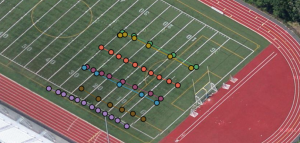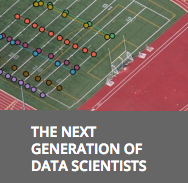Based on a submission by Fred Martin about his NSF-funded project to enhance science and math instruction with a web environment for data sharing and visualization.

walking on the school’s football field
Usually when a student pulls out a cell phone in science class, the teacher takes objection. But that’s changing with the introduction of new mobile apps and web technologies developed by the University of Massachusetts Lowell (UML) and Machine Science Inc. These tools enable middle school and high school students to collect scientific data using smart phones or tablet computers, and then share and visualize the data online using an open web platform called the Internet System for Networked Science Experimentation (iSENSE).
NSF Project Information
Title: DIP: Collaborative Research: Transforming Science Learning with an Interactive Web Environment for Data Sharing and Visualization
PIs: Fred Martin, Michelle Scribner-MacLean, University of Massachusetts Lowell (Award)
Samuel Christy, Machine Science Inc.
(Award)
Researchers from UML’s Graduate School of Education are studying how iSENSE can enhance science and math instruction and help students understand the changing face of science in the era of big data. Over the past year, science and math educators have incorporated iSENSE into their teaching in a variety of creative ways. A math teacher from Hollis, New Hampshire, devised a probability experiment to demonstrate the law of large numbers. Her students repeatedly rolled a pair of sixsided dice and shared the results of each trial on iSENSE, showing how the sums of the rolls become normally distributed as the number of trials increases. A physics teacher from Tyngsborough, Massachusetts, used a mobile app developed by the iSENSE project team to collect and upload data on the accelerations experienced by students during a field trip to a local amusement park. In another project, students in Reading, Massachusetts, studied velocity and acceleration by collecting timeseries global positioning system (GPS) data while running sprints on the school’s football field.
The iSENSE web site offers a repository of usercontributed datacollection activities, such as engineering projects, environmental studies, classroom science experiments, and surveys, together with the data produced by those activities. The system enables users to contribute their own activities, upload data, and configure and save dynamic data visualizations.
Image credits: Fred Martin, University of Massachusetts Lowell

